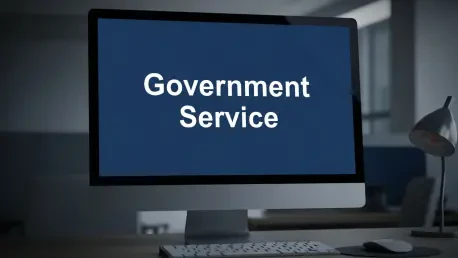Introduction
In an era where seamless access to services is increasingly expected, government leaders are stepping up to transform how citizens interact with public systems, addressing real challenges faced by many. Consider a scenario where a single parent, juggling work and family responsibilities, struggles to navigate complex bureaucratic processes to secure essential support, highlighting the urgent need for more accessible and efficient government services. The focus on accessibility is not just about convenience; it is a fundamental step toward equity and inclusion in public administration.
This FAQ article aims to explore the innovative strategies being adopted by government officials to improve service delivery. It delves into specific approaches and related digital policies that shape user experiences, offering clear answers to common questions on this topic. Readers can expect to gain insights into how these efforts address real-world challenges and what they mean for everyday interactions with government entities.
The scope of this content spans both physical and digital initiatives, highlighting the intersection of policy and technology. By addressing key questions, the discussion aims to provide a comprehensive overview of current trends and practical implications. This sets the stage for understanding the broader movement toward user-centric governance.
Key Questions or Topics
What Is the ‘Any Door’ Service Approach?
The concept of an ‘any door’ service approach has emerged as a promising framework in modern governance. This strategy focuses on allowing citizens to access government services through multiple entry points or channels, eliminating the frustration of navigating rigid, single-path systems. The importance of this approach lies in its potential to reduce barriers, especially for underserved communities who may lack the time or resources to engage with traditional bureaucratic structures.
By prioritizing flexibility, the ‘any door’ model ensures that whether a person uses a digital portal, visits a local office, or calls a helpline, they can reach the needed assistance with ease. This adaptability addresses longstanding challenges such as long wait times and complex paperwork, which often deter individuals from seeking support. For instance, a rural resident with limited internet access might still connect through a community center equipped with necessary tools, demonstrating the model’s inclusive design.
While specific data on implementation remains limited, the trend aligns with global movements toward citizen-focused administration. Governments adopting this method often integrate technology to streamline processes, ensuring that service delivery is not only accessible but also efficient. This shift reflects a broader commitment to meeting citizens where they are, both literally and figuratively.
How Are Digital Tools Supporting Government Service Accessibility?
Digital transformation plays a pivotal role in enhancing how public services are delivered. As governments strive to modernize, tools like online portals, mobile applications, and automated systems are being deployed to simplify interactions. The significance of this shift is evident in addressing the digital divide, ensuring that even those with minimal tech skills can benefit from streamlined processes.
These tools often serve as virtual ‘doors’ under the ‘any door’ framework, allowing users to apply for benefits, pay taxes, or request records without stepping into a physical office. A practical example is the use of mobile apps that send reminders for renewal deadlines, reducing the risk of missed opportunities due to oversight. Such innovations cater to a growing expectation for instant, on-demand access in an increasingly digital world.
Supporting this trend, many government initiatives from the current year onward aim to expand broadband access and digital literacy programs, ensuring inclusivity in tech-driven solutions. The emphasis on user-friendly interfaces also helps mitigate challenges for older adults or those unfamiliar with technology. This dual focus on infrastructure and education underpins the success of digital tools in public service enhancement.
What Role Do Privacy Policies Play in Digital Government Services?
As digital platforms become central to government service delivery, privacy concerns take on heightened importance. Policies surrounding data usage, such as cookie policies on government websites, are critical for maintaining trust while ensuring functionality. These guidelines address the challenge of balancing operational needs with the protection of personal information in an era of frequent cyber threats.
A typical cookie policy, for example, categorizes data collection into essential functions—like remembering user preferences—and optional ones, such as targeted advertising. Users are often given toggles to opt out of non-essential cookies, reflecting a commitment to transparency. This approach not only complies with regulations like the California Consumer Privacy Act but also reassures citizens that their data is handled responsibly.
Evidence of this balance can be seen in detailed disclaimers on public websites, which explain how opting out of certain data tracking might affect user experience without compromising core services. Such clarity empowers individuals to make informed choices, aligning digital service delivery with broader accessibility goals. The emphasis on user control mirrors the inclusive ethos of initiatives like the ‘any door’ approach, extending trust-building into the digital realm.
What Challenges Remain in Enhancing Service Accessibility?
Despite progress, significant hurdles persist in making government services truly accessible to all. One major issue is the disparity in access to technology, particularly in rural or economically disadvantaged areas where internet connectivity may be unreliable. This digital divide risks leaving certain populations excluded from the benefits of modernized systems, undermining the equity goals of accessibility initiatives.
Another challenge lies in the complexity of integrating multiple service channels without creating confusion. For instance, inconsistent information across digital and physical platforms can frustrate users seeking clear guidance. Addressing this requires not only technical upgrades but also robust training for staff to ensure uniformity in service delivery, a process that demands time and substantial investment.
Additionally, privacy concerns continue to pose obstacles, as some citizens remain wary of sharing personal data online, even with assurances of security. Overcoming this skepticism involves ongoing education about data protection measures and transparent communication from government bodies. Tackling these issues remains essential to realizing the full potential of accessibility-focused reforms.
Summary or Recap
This discussion highlights several critical aspects of how government leaders are working to enhance service accessibility. The ‘any door’ approach stands out as a transformative strategy, emphasizing multiple access points to meet diverse citizen needs. Digital tools further support this mission by offering convenient, efficient platforms for interaction, while privacy policies ensure that trust and security remain priorities in the digital space.
Key takeaways include the importance of flexibility in service delivery and the role of technology in bridging gaps between governments and citizens. Challenges such as the digital divide and privacy concerns persist, but the commitment to user-centric design offers a promising path forward. These insights underscore the ongoing need for innovation and inclusivity in public administration.
For those seeking deeper understanding, exploring resources on digital governance trends or privacy regulations can provide valuable context. Government websites often publish detailed reports on accessibility initiatives, serving as a useful starting point for further reading. This summary encapsulates the core elements of the topic, setting the stage for reflection on personal and societal implications.
Conclusion or Final Thoughts
Reflecting on the strides made in government service accessibility, it becomes evident that the journey has been one of adaptation and perseverance. The focus on flexible models and digital integration marks a significant shift in how public needs are addressed over time. These efforts lay a foundation for more equitable interactions, even as challenges linger on the horizon.
Moving forward, a practical step could be for individuals to engage with local government portals to familiarize themselves with available digital tools and privacy options. Exploring these platforms offers a chance to influence future improvements by providing feedback on user experiences. Such participation could help shape policies that better serve diverse communities.
Beyond personal action, consideration of broader advocacy for universal internet access stands as a vital next step. Supporting initiatives that tackle the digital divide promises to amplify the impact of accessibility reforms in the long run. This reflection invites everyone to think about their role in sustaining momentum toward a more inclusive public service landscape.









